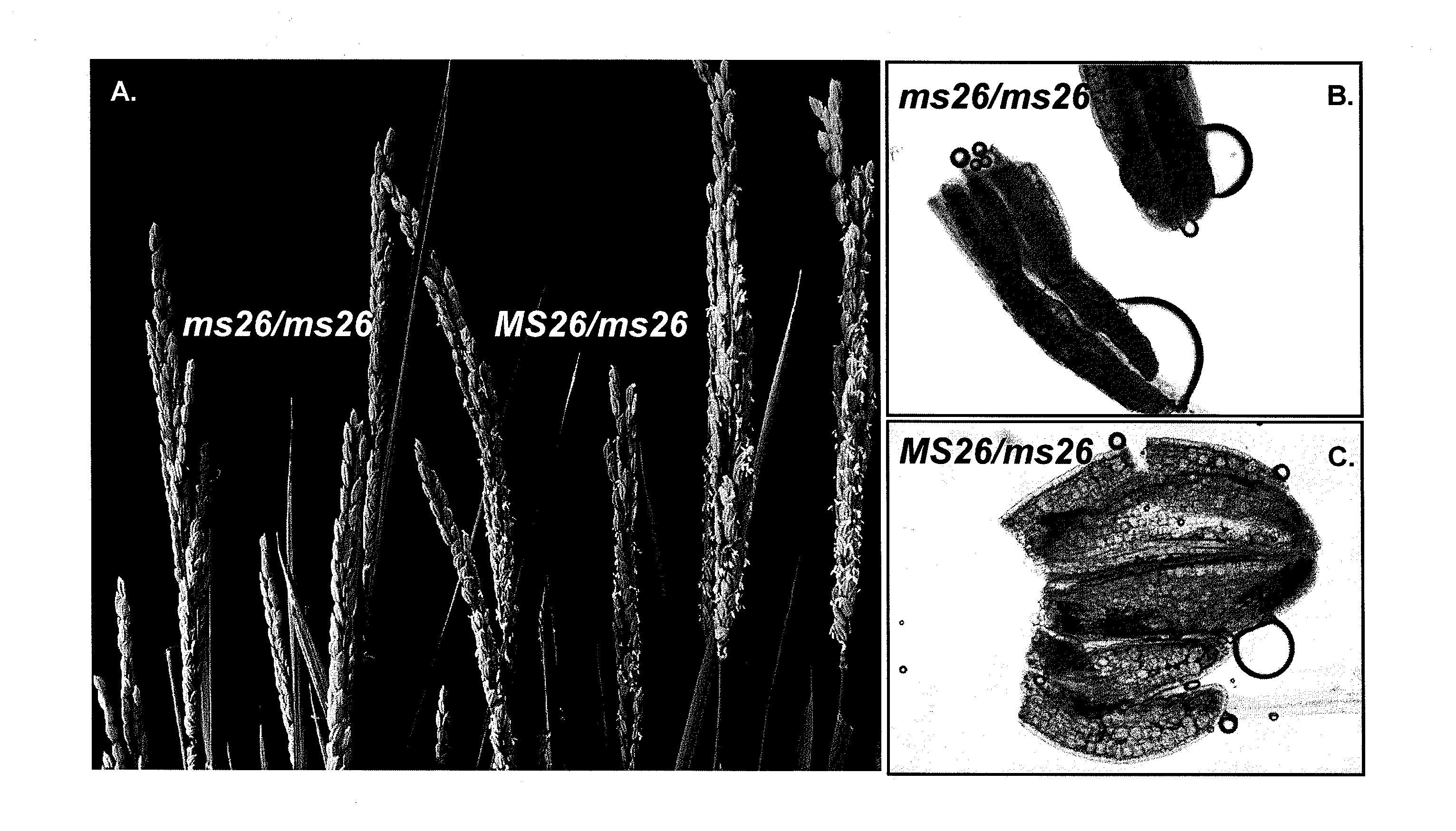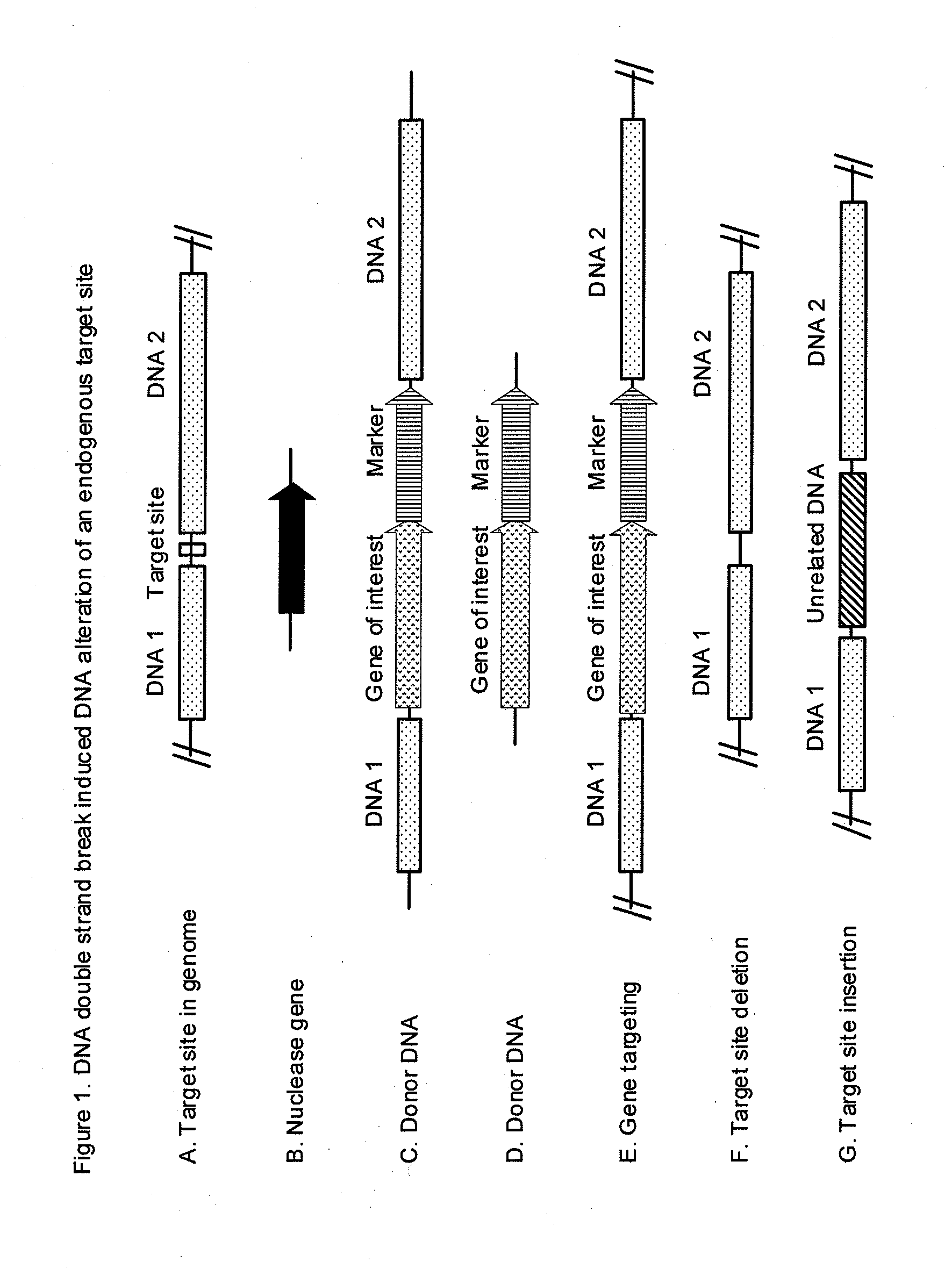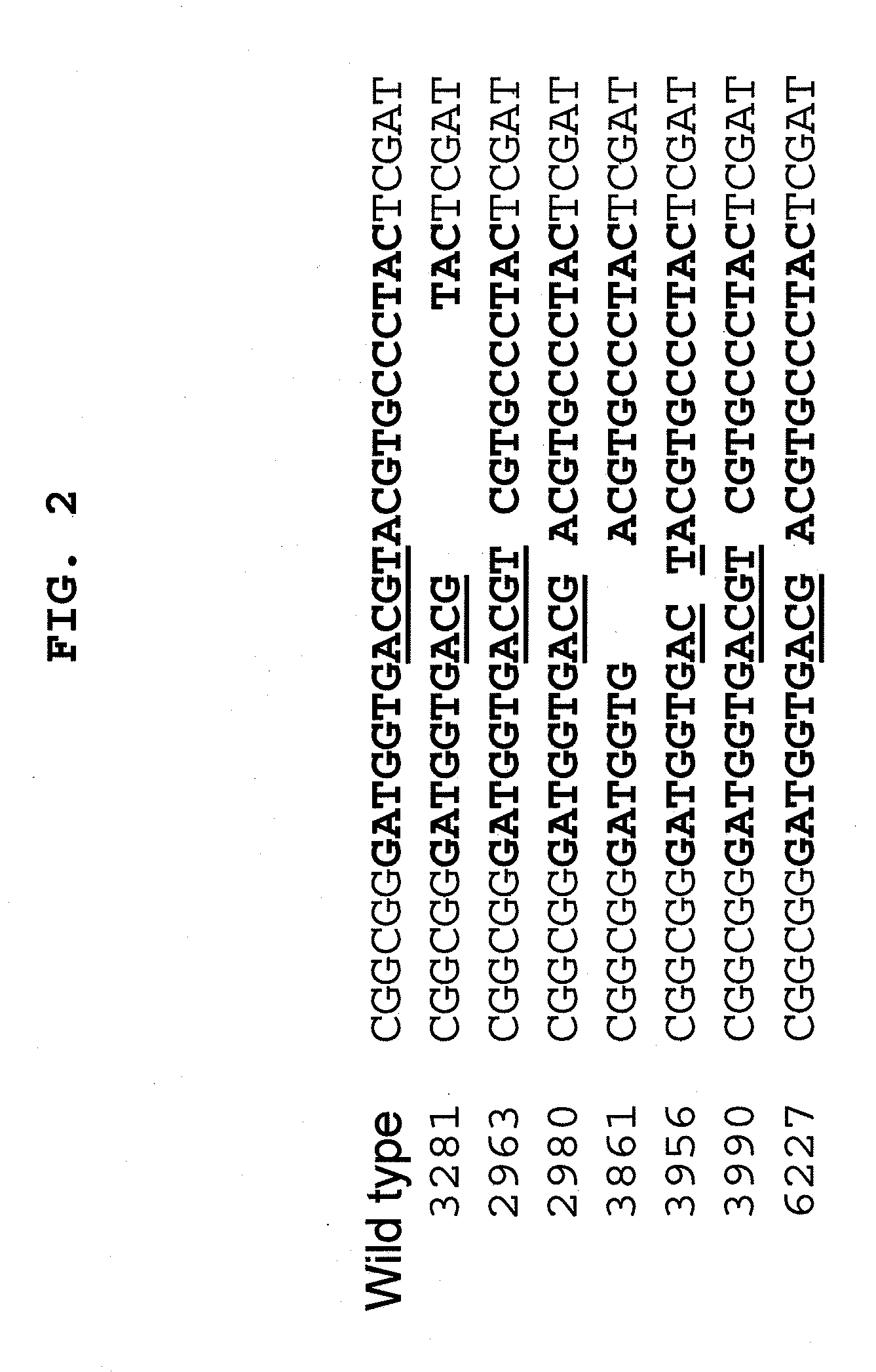Methods and compositions for producing male sterile plants
a technology of sterile plants and compositions, applied in the field of plant molecular biology, can solve the problems of tasseling of plants, a germplasm security risk, and is not as productiv
- Summary
- Abstract
- Description
- Claims
- Application Information
AI Technical Summary
Benefits of technology
Problems solved by technology
Method used
Image
Examples
example 1
DNA Double-Strand-Break-Induced Alteration of an Endogenous Target Site
[0306]When a DNA double-strand-break-inducing agent recognizes and cleaves the specific recognition sequence at a target site in the genome, a DNA double-strand break is formed, triggering the cell DNA repair mechanisms to mobilize to repair the damage that could be fatal to the cell. The process can be utilized in plant transformation to introduce mutations specifically at the target site to knock out the gene residing at the target site or to insert a donor DNA of interest at the target site. Once the DNA double-strand break is formed, depending on the designs of the DNA constructs involved and the actual processes of DNA repair, different outcomes can be obtained serving different transformation purposes.
[0307]For simple site-specific gene mutations, a target site containing a recognition sequence (FIG. 1A) and a DNA double-strand break agent such as a endonuclease (FIG. 1B) that recognizes specifically the re...
example 2
Male-Sterile Maize Plants Produced by the Targeted Mutagenesis of a Cytochrome P450-Like Gene, MS26, Using an Engineered MS26 Endonuclease
[0310]ZmMS26 is a locus of interest for making a male sterile mutation in maize located on the short arm of chromosome 1. The maize MS26 gene (SEQ ID NO: 8; AF366297) consists of five exons and it encodes an amino acid sequence (SEQ ID NO 12; AAK52956.1) that shows substantial homology to the CYP70481-Zm gene—a member of the extensive (over 26 genes) family of the maize cytochrome P450 monooxygenases. The heme domain, essential for catalytic activity, is found in the fifth exon (U.S. Pat. No. 7,517,975). Null mutants of the maize MS26 gene cause premature termination of microspore development in anther locules as this gene has been implicated in pollen wall formation (Li et al. (2010) Plant Cell; 22:173). Frameshift or premature termination mutations in this region are expected to knockout the maize MS26 gene function.
[0311]An engineered I-CreI-ba...
example 3
Male-Sterile Rice Plants Produced by the Targeted Mutagenesis of a Cytochrome P450-Like Gene, MS26, Using an Engineered MS26 Endonuclease
[0328]The maize MS26 gene (ZmMS26, Accession No. AF366297; SEQ ID NO: 8) and its orthologues in rice (Accession No. LOC_Os03g07250; SEQ ID NO: 9) sorghum (SEQ ID NO: 10) and rye (SEQ ID NO: 11) encode a cytochrome P450, CYP704B family (U.S. Pat. App. Pub. No. 2009 / 0183284), proposed to catalyze the production of omega-hydroxylated fatty acids with 16 and 18 carbon chains (Li et al. (2010) Plant Cell 22:173). Homozygous recessive mutations that disrupt the coding frame of the maize (U.S. Pat. No. 7,517,975) or rice MS26 genes result in the plant's inability to generate functional pollen grains which is likely due to reduced production of fatty acids critical to pollen wall formation (Li et al. (2010) Plant Cell 22:173). The MS26 genes from maize, rice, sorghum and rye all contain an identical 22 nucleotide sequence, referred to as the “TS-MS26” targ...
PUM
| Property | Measurement | Unit |
|---|---|---|
| pH | aaaaa | aaaaa |
| Tm | aaaaa | aaaaa |
| Tm | aaaaa | aaaaa |
Abstract
Description
Claims
Application Information
 Login to View More
Login to View More - R&D
- Intellectual Property
- Life Sciences
- Materials
- Tech Scout
- Unparalleled Data Quality
- Higher Quality Content
- 60% Fewer Hallucinations
Browse by: Latest US Patents, China's latest patents, Technical Efficacy Thesaurus, Application Domain, Technology Topic, Popular Technical Reports.
© 2025 PatSnap. All rights reserved.Legal|Privacy policy|Modern Slavery Act Transparency Statement|Sitemap|About US| Contact US: help@patsnap.com



